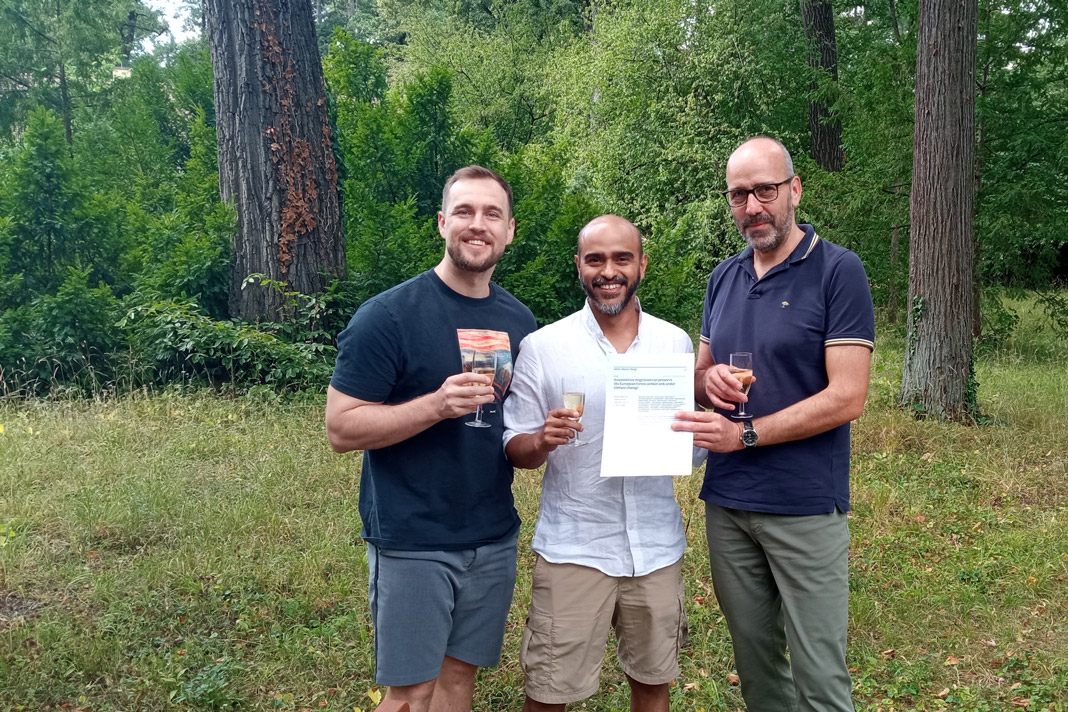Swiss forests to be rejuvenated
Switzerland recently adopted a new forest law that is the first to specifically link forest protection with adaptation to climate change. The plan allows for the rejuvenation of forests, enhancing their genetic adaptive capacity and thus helping to secure their long-term sustainability. The new law allows for assisted migration of tree species and distant but suitable sources of forest reproductive material.
The new policy may result in a reduction of the amount of CO2 stored as forest biomass in the short term. Longer term, it is indispensable to ensure the survival of the forests.
According to Rolf Manser, Head of the Forest Division of the Swiss Federal Office for the Environment, “parliament recognized that early adaptation is significantly far more economically justifiable than the later repair of damages. This is why financial means were pledged to support forest owners for targeted tending of their forests.”
The law makes CHF 10 million (almost € 9.2 million) available each year for regeneration of “critical protective forests”. A further CHF 10 million is available for regeneration in other Swiss forests. An expansion of the area of protected forests is also foreseen, from 4% currently to 10% by 2030, with specific support to care for young forests.
<link http: www.forestportal.sk lesne-hospodarstvo politika-legislativa medzinarodna forest-europe documents _blank external-link-new-window external link in new>Forest Europe Resolution M2, adopted in Madrid in 2015, commits signatory countries to “Increase the work on adaptation of forests and forest management to climate change to prevent and mitigate damage caused by changing conditions at the local and regional scales in order to secure all functions of European forests, including their resilience to natural hazards and protection against human-induced threats, maintaining their productive and protective functions.”
Switzerland’s new forest law is the first in Forest Europe to meet this commitment. It uses regeneration as the best opportunity to adapt tree populations to changing climate. Regeneration, whether natural or artificial, is the stage that establishes the genetic composition of the stand, providing an opportunity to expand genetic diversity and thus enhance the adaptability of the forest.
Manser presented the new Swiss forest law during a side event at the FAO Committee on Forestry meeting in July. Manser’s title was “No mitigation without adaptation,” and he pointed out that while discussions often assume that forests will provide environmental protection and other ecological services to mitigate the effects of climate change, “the forest itself is endangered by climate change. Forests can only provide their middle and long-term benefits if they obtain support from adaptation processes”.
Climate change is already making itself felt in Switzerland. The huge winter storms of 1999 felled 7.4 million cubic metres of spruce, double the normal yearly harvest. Large forest fires – possibly aggravated by lack of snow and mild spring weather – have destroyed wide areas, with consequent increases in flooding, mudslides and avalanches.
“Doubts that the future climate will be warmer, dryer, and more extreme melt away like the glaciers in the Swiss Alps,” Manser told the meeting. “For the Swiss forest this means that the impacts will without a doubt be appreciable. Trees that are germinating today will live in a drastically changed climate already by the time they are middle-aged.”
Against this background, in 2009 Switzerland began a research programme on adaptation of forests to climate change, which culminated in the revised Federal Forest Law.
Given Switzerland’s complex geography, one priority is to have a good idea of which tree species will do best in different locations. The research programme, among other activities, investigated how forest ecosystems would change under different climate scenarios. The research results offer guidance to forest owners and managers to consider different species compositions that will enable forests both to deliver ecosystem services and be productive under changing climate conditions.
The research programme (due to end in 2017), the adoption of an agreed Forest Policy 2020, the publication of a national strategic action plan for biodiversity and the revision of the Federal Forest Law have all contributed to more secure future for Swiss forests and, by extension, Switzerland.
“These efforts were time-intensive,” Manser said. “However they also proved to be a fundamental factor of success.”
Related Links
- Adaptation to climate change in Switzerland - strategy
- Adaptation to climate change in Switzerland - platform
- More about forest genetic resources in Switzerland
- Adapting to climate change - a major challenge for forests (article by the Swiss Federal Institute for Forest, Snow and Landscape Research WSL)







